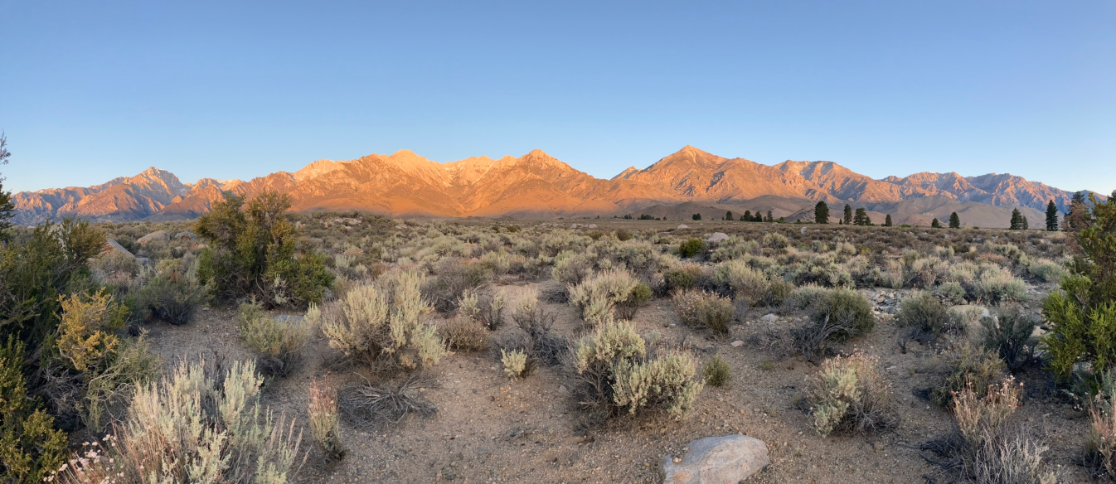Looking Back at 2021: the Nevada Bird Count & IMBCR programs
/Wow, how time is flying! Our 2022 field work is now well underway. We had a very successful 2021, and are bringing those experiences to the current year! So we will be sharing a short series of blogposts to talk about what we were working on last year, and some of the highlights and maybe a few lessons learned.
I’ll start off talking about our Nevada Bird Count/IMBCR (Integrated Monitoring of Bird Conservation Regions) crew/projects. It’s probably not a surprise to anyone, but man, 2021 was DRY. Scarily dry. We started off helping out with surveys for the thrasher program in April - Dawn will be sharing some highlights from that later – and our southern Nevada point count surveys. I wrote up a blogpost on one of my thrasher surveys down there last year – you can find that here. My overwhelming memory is of large numbers of desert shrubs, with few to no leaves – even the creosotes with brown dessicated leaves, and branches that had died back within the past year. Even the seemingly-ever-present Black-throated Sparrows appeared impacted – many did not appear to be breeding (unusually, I never saw any breeding evidence for them during my southern Nevada surveys). Even singing was affected – one creosote site where I’ve camped and surveyed most years since 2008, where there are always Black-throated Sparrows singing during the breeding season – I heard one singing a single short phrase at about 3 o’clock in the morning, and that was it. It brought Rachel Carson’s Silent Spring to mind. One of our sites in the southern Great Basin looms similarly large in my mind – very few birds singing, with many of the sagebrush only supporting a branch or two that contained leaves.
Our two primary Nevada Bird Count projects were located at Ash Meadows National Wildlife Refuge and along the Truckee River. Our Ash Meadows surveys were definitely a breath of fresh air amongst our other southern Nevada upland projects, and it was wonderful to be surveying near water! My favorite survey was definitely our Crystal Reservoir transect that samples the wet ash meadows near the reservoir. Summer Tanagers, a few Phainopepla and Vermilion Flycatchers, lots of Bewick’s Wrens … and wet feet!
Vermilion Flycatcher at Ash Meadows National Wildlife Refuge, Jen Ballard
Our Truckee River surveys continued work begun in the 1990s along the lower Truckee River, from Lockwood down to Nixon. As with our Ash Meadows surveys, we definitely appreciated surveying near water! What stands out the most to me was the growth of the young cottonwoods (and a few willows) that had established in 2017-2018, and surveying points where once we’d had an unobstructed view for hundreds of meters, and now we looked out at a bank of young cottonwoods, their tops waving in the breeze. On one of the long-term area search plots, where for years we had only had Yellow Warblers migrating through, now there were several territories, two with confirmed young. It was incredibly heartening!
Upper McCarran #11, in 2019 ... you can see the young cottonwoods coming up!
Same place, 2021 ... you can just barely see the top of the hill & gallery cottonwoods!
Last but not least, we conducted 109 surveys of IMBCR plots for the BLM and Forest Service in Nevada and eastern California. Our Forest Service surveys are only on the Humboldt-Toiyabe National Forest, and cover all three conservation regions, in the Carson Range/Sierras, Great Basin, and Mojave Desert. Our BLM surveys were only within BCR 9 (the so-called Great Basin region). We definitely appreciated the opportunity to cover most of Nevada and some of eastern California, and having such widespread coverage was helpful to look at drought impacts.
I mentioned above that we appeared to be seeing impacts of the drought on the Black-throated Sparrows in our IMBCR surveys. During the season, it seemed I was detecting fewer of them, and when I was, it seemed there were more at higher elevations than “normal,” and further north. Talking to Ned, he, too, was seeing them in greater numbers on his more northern surveys. So I did a quick data dive – I didn’t look at elevation, so I can’t say whether my initial impressions were correct in that regard, but we certainly did see some changes in latitude! The following quick video shows the results of three years of our BLM surveys – the numbers are detections of Black-throated Sparrows within 100m, summarized at the transect level, but to maintain consistency between years, I only used data from points that were surveyed in each of the three years: 2019, 2020, and 2021. We can see that there’s a fair amount of annual variation in those numbers, but that there was a clear tendency for fewer detections overall, and fewer detections in southern Nevada.
The total abundance (of all species) was even clearer on these surveys, declining over the three-year period, with the steepest drop in 2021, where total detections (tallied as above) in 2021 were 25% lower those in 2019. Here’s how those results were visualized.
So, it was an interesting year for us, and we are looking forward to seeing what 2022 holds! Stay tuned for our next installment ….
- Jen




